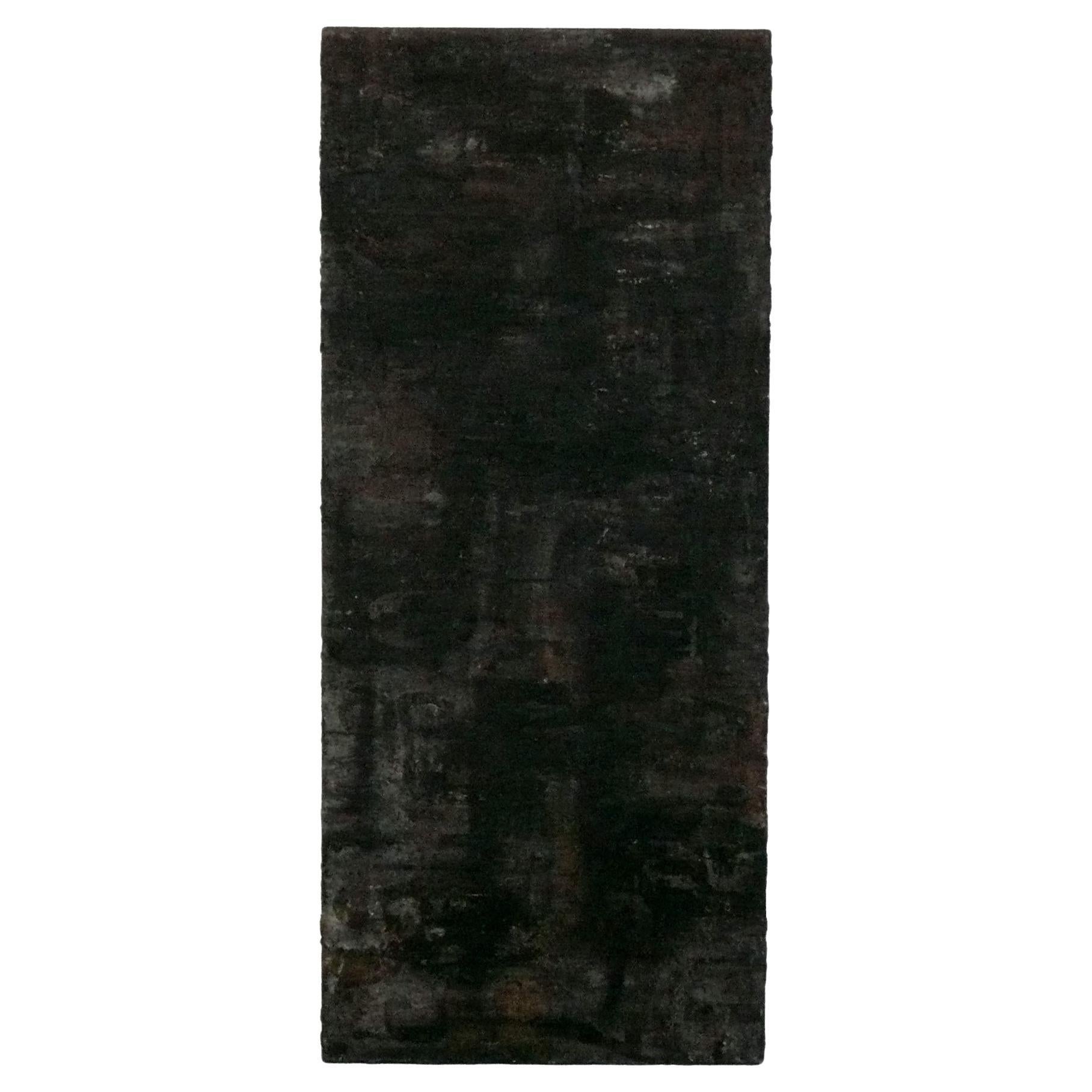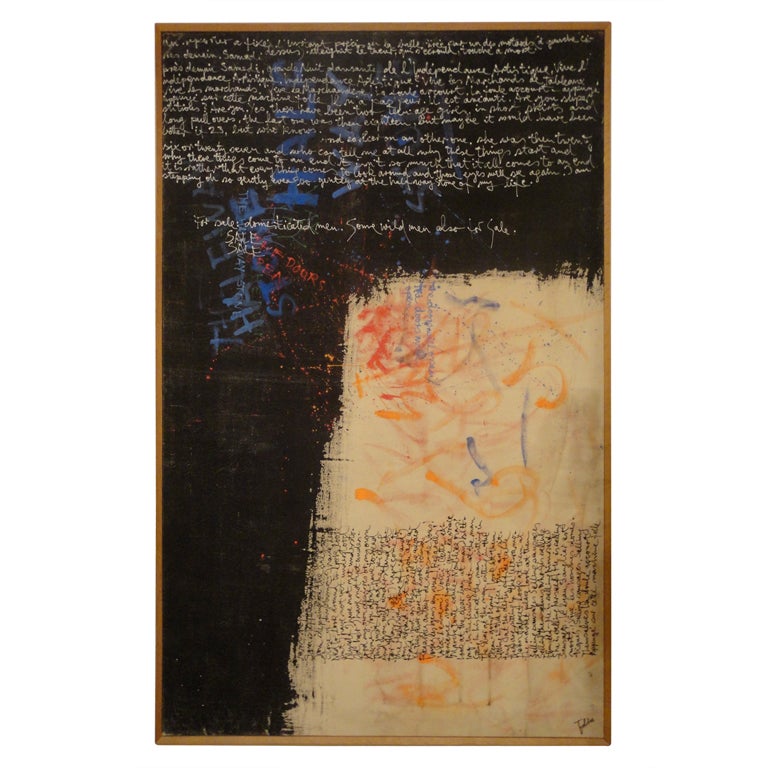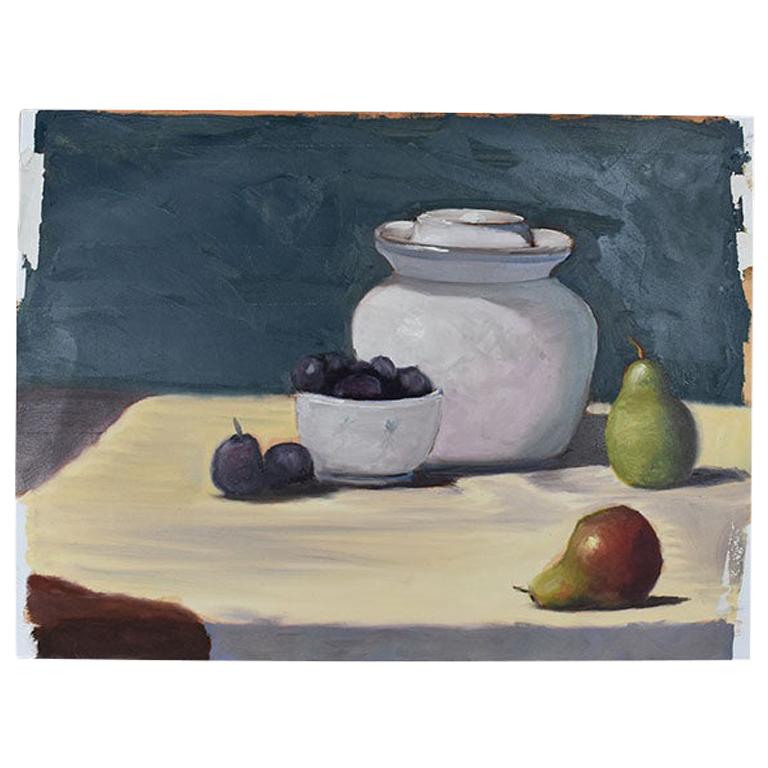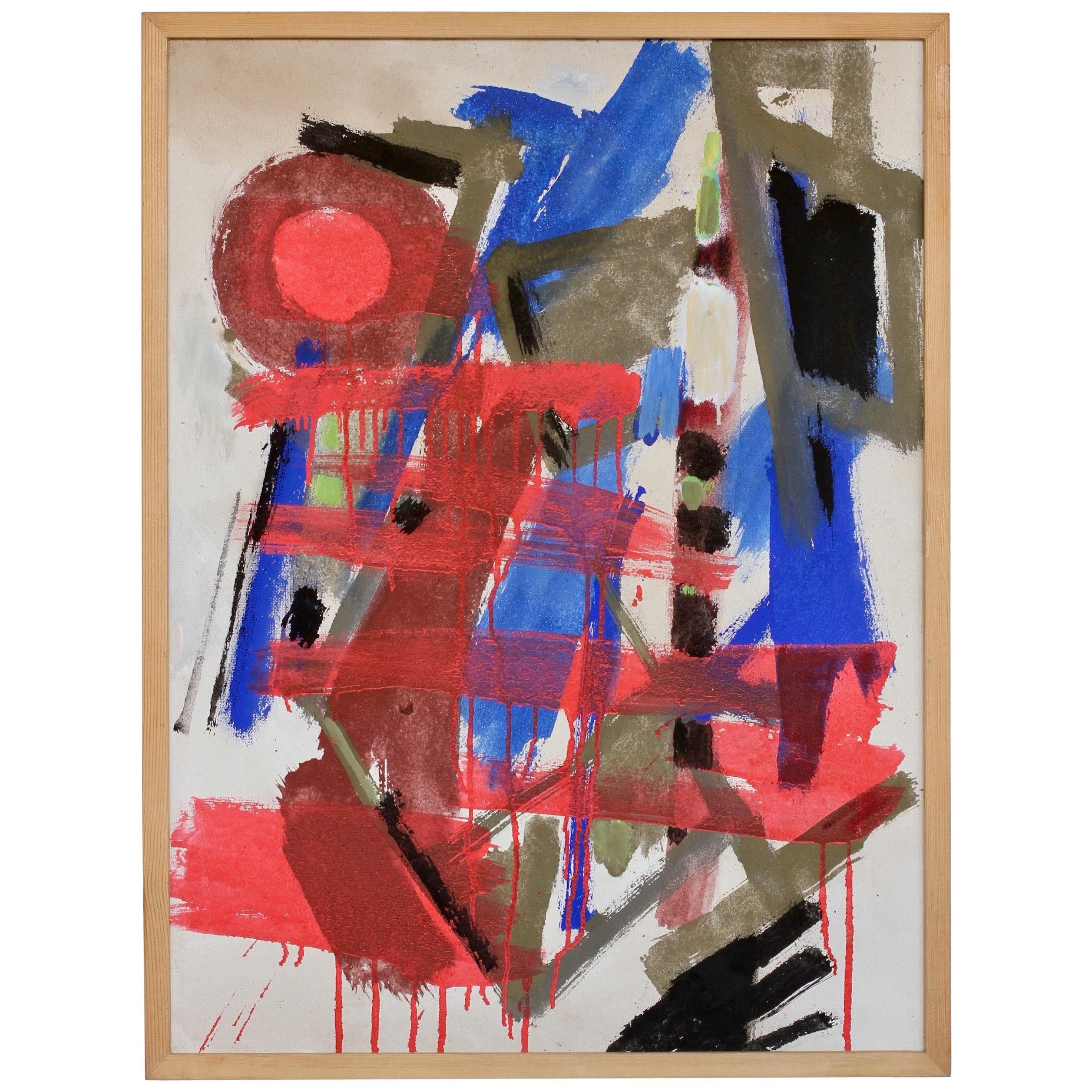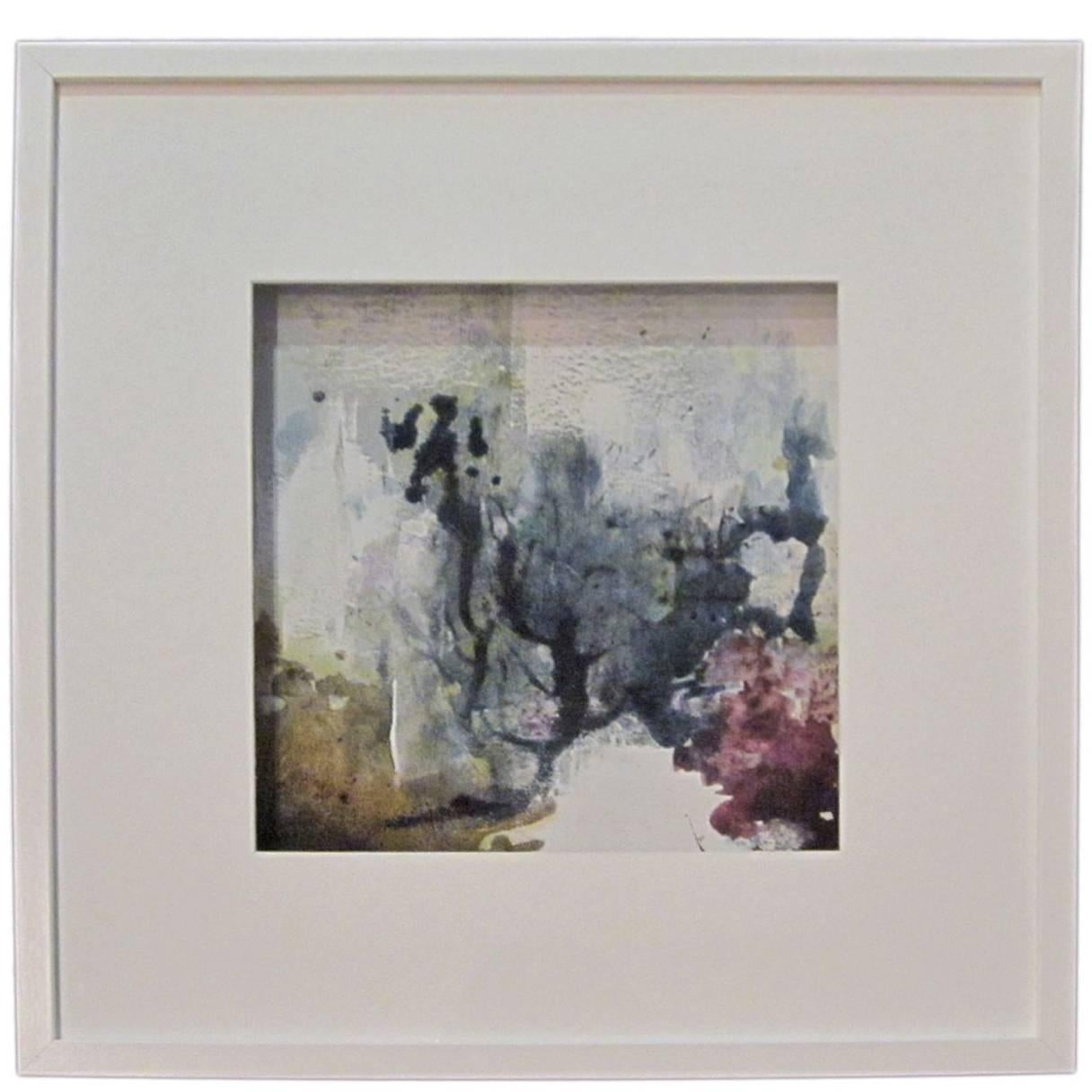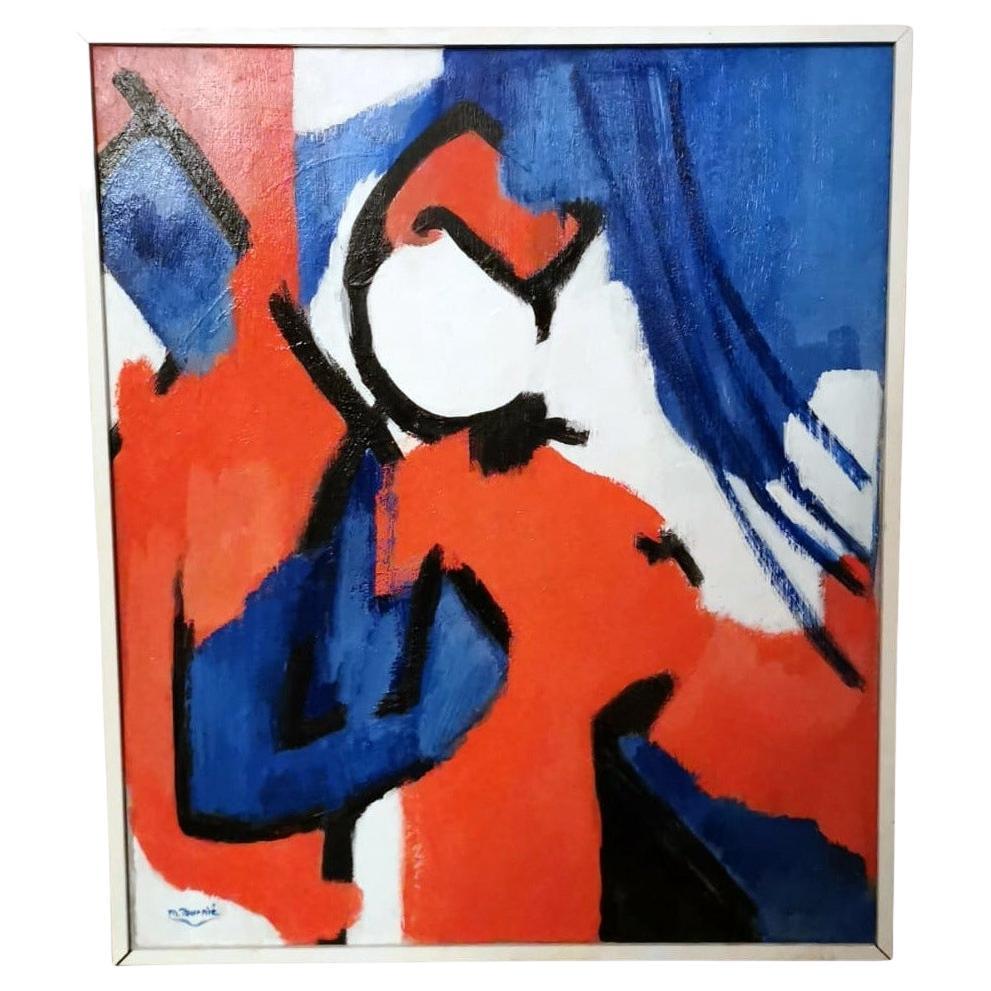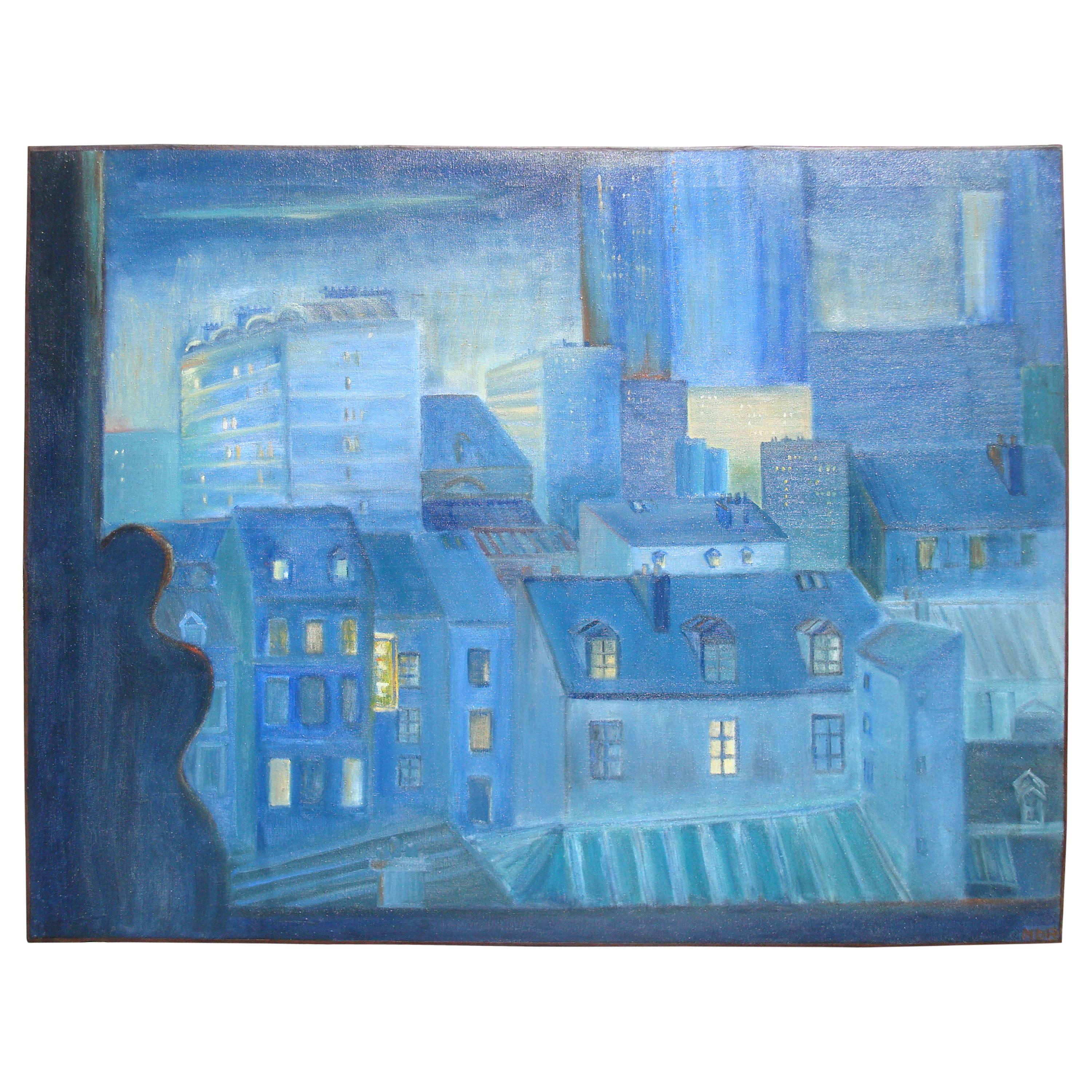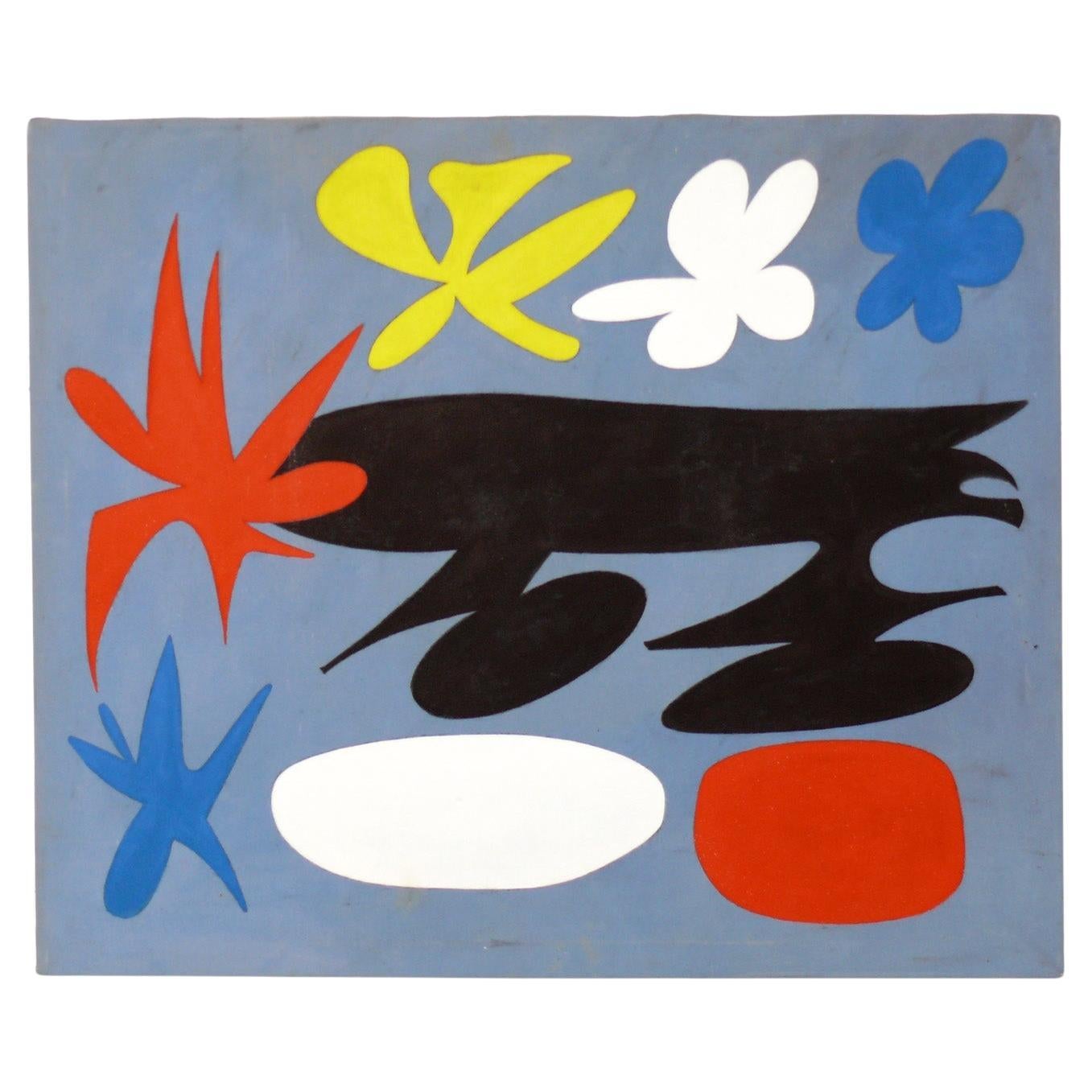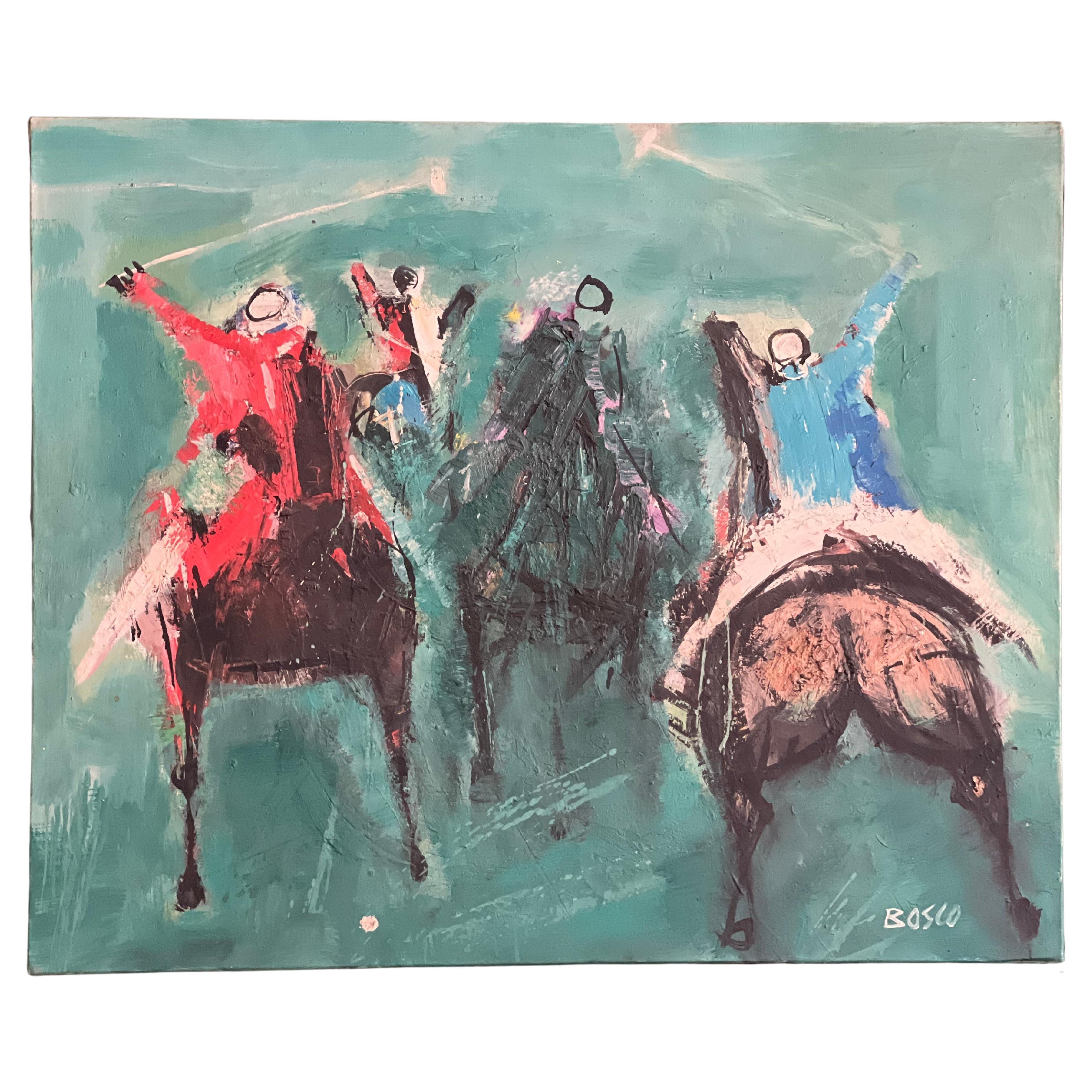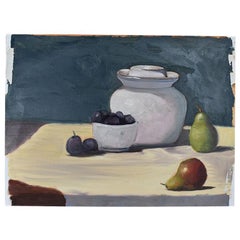
French Oil Painting of a Seeded Fruit or Vegetable circa 1960
View Similar Items
1 of 7
French Oil Painting of a Seeded Fruit or Vegetable circa 1960
About the Item
- Dimensions:Height: 36.5 in (92.71 cm)Width: 36.5 in (92.71 cm)Depth: 1.5 in (3.81 cm)
- Materials and Techniques:
- Place of Origin:
- Period:
- Date of Manufacture:c.1960
- Condition:Wear consistent with age and use.
- Seller Location:Houston, TX
- Reference Number:Seller: FG71stDibs: LU8668786156
You May Also Like
- All Black Textural Abstract Painting, circa 1960s, Vertical or HorizontaBy Robert RauschenbergLocated in Atlanta, GAAll Black Abstract Textural Painting, American, circa 1960s. Wonderful textural surface throughout. It appears to be all black, but under close inspection, you can see numerous other...Category
Vintage 1960s American Mid-Century Modern Paintings
MaterialsCanvas, Wood
- Painting Oil on Canvas Signed "Foldes" circa 1950 FranceBy FoldesLocated in Jersey City, NJ"For sale Domesticated Men. Some Wild Men also for sale" That is the best description possible of Oil on Canvas Signed and dat...Category
Vintage 1950s French Paintings
- Original Clair Seglem Still Life Fruit Painting of Fruit on TableLocated in Oklahoma City, OKA landscape still life painting of fruit and white vessels on a table. Measures: 13" x 17.5". This lovely painting depicts deep purple plums and green pears sitting upon a table. A w...Category
Late 20th Century American American Classical Paintings
MaterialsPaint, Paper
- Walter Wohlschlegel Signed Abstract Modern Art Oil Painting, Germany circa 1960sBy Walter WohlschlegelLocated in Landau an der Isar, BayernA wonderful informal abstract modernist oil painting signed by German artist Walter Wohlschlegel (1907-1999). Painted on hardboard, Wohlschlegel is painting on the rough textured sur...Category
Mid-20th Century German Mid-Century Modern Paintings
MaterialsWood
$3,240 Sale Price22% Off - Abstract Vegetable Pigment Painting by Belgian Artist Isabelle RousseauLocated in New York, NYContemporary vegetable pigment painting by Belgian artist Isabelle Rousseau. Grey, purple. The ink watercolors used by the artist emerge from tinctorial plants picked and transform...Category
2010s Belgian Paintings
MaterialsWatercolor
- French Symbolic Expressionism Oil Painting Depicting French RevolutionLocated in Prato, TuscanyWe kindly suggest that you read the entire description, as with it we try to give you detailed technical and historical information to ensure the authenticity of our objects. Painting oil painting on canvas is made with mixed technique brush and spatula; the author used traditional brushes for a first draft giving shape to the whole drawing with an expert, loose wrist play and with sure and decisive brushstrokes; the representation, in this case, is not a pure exercise of virtuosity, in fact, the author communicates us his intimate essence manifesting it through the language of colors, shapes, and composition. The artist finished his work with the technique of spatula painting, named after the protagonist's instrument, redistributing the colors densely and consistently, making the painting take on a special body and depth. The painting is signed but we are unable to give definite information about the author, however, we confirm its extraordinary aesthetic and engaging vividness; the painting was made in 1989 in the author's studio in Paris whose intentions were to celebrate the 200th anniversary of the French Revolution (1789). The painter was inspired by both French Expressionism and Symbolism; Expressionism exalts the emotional value of art; it is the artist's desire to communicate inner feelings, while with Symbolism, painters tend to go beyond the objective representation of reality to focus instead on the subjective vision, in which inner feelings, emotions, and experiences are evoked above all. Our painting is overflowing with the symbolism of the French Revolution; it is practically an evocative essence of it. This important and overwhelming historical event is powerfully present in the soul of the artist who wanted to overbearingly communicate to us his deepest emotions by transposing them entirely in the painting with strong and vivid colors, he did not want to simply allude or hint but to express, indeed "shout" his own deep interiority. In his intentions, the painting schematically and symbolically represents a standard-bearer of the French Revolution wearing the classic "Phrygian" hat. The author used only the three colors white, red, and blue that characterized the flags of the French Revolution; they were the new banners, which opposed the traditional emblem of the monarchy, the lilies on a white field. Three were the colors because three were the goals of the Revolution: liberty, equality, and fraternity, and they represented the three classes into which French society of the time was divided: the clergy (blue), the nobility (white), and the third state (red). The "Phrygian" cap (Latin for pileus) painted in red in the painting also has a high symbolic value, In Roman times it was worn by the " freedmen" to show that they were now freed slaves but in the French Revolution it became the very symbol of Liberty; a similar cap was worn by the freed Marseilles convicts in 1792, and was the symbol of the Jacobins during the French Revolution. Due to this fact, in addition to its historical meaning of freedom, it was later adopted as a symbol of the revolution itself, a symbol immortalized on the "Marianne," the very emblem of France, in Eugène Delacroix's famous painting "Liberty Leading the People...Category
Late 20th Century French Modern Paintings
MaterialsCanvas, Wood
Recently Viewed
View AllMore Ways To Browse
Imperial Standard
King Bed Frame Midcentury
Louis Xv Style French Marble Top Commode
Mirrored French Chest
Shop Display Case
Vintage Style Garden Chairs
Antique French Vanity Table
Country Vintage Dining Chairs
4 Chairs Caning
Niels Otto Moller Chair Teak
Painted And Gilded Cabinet
Large Chinese Dragon
White Vintage Dining Room Chairs
Walnut Mid Century Dining Table And Chairs
Chippendale Style Chairs Dining Room
Antique Chinese Black Lacquer Cabinet
Gold Door Handle
Dining Room Set 18th Century Carved
